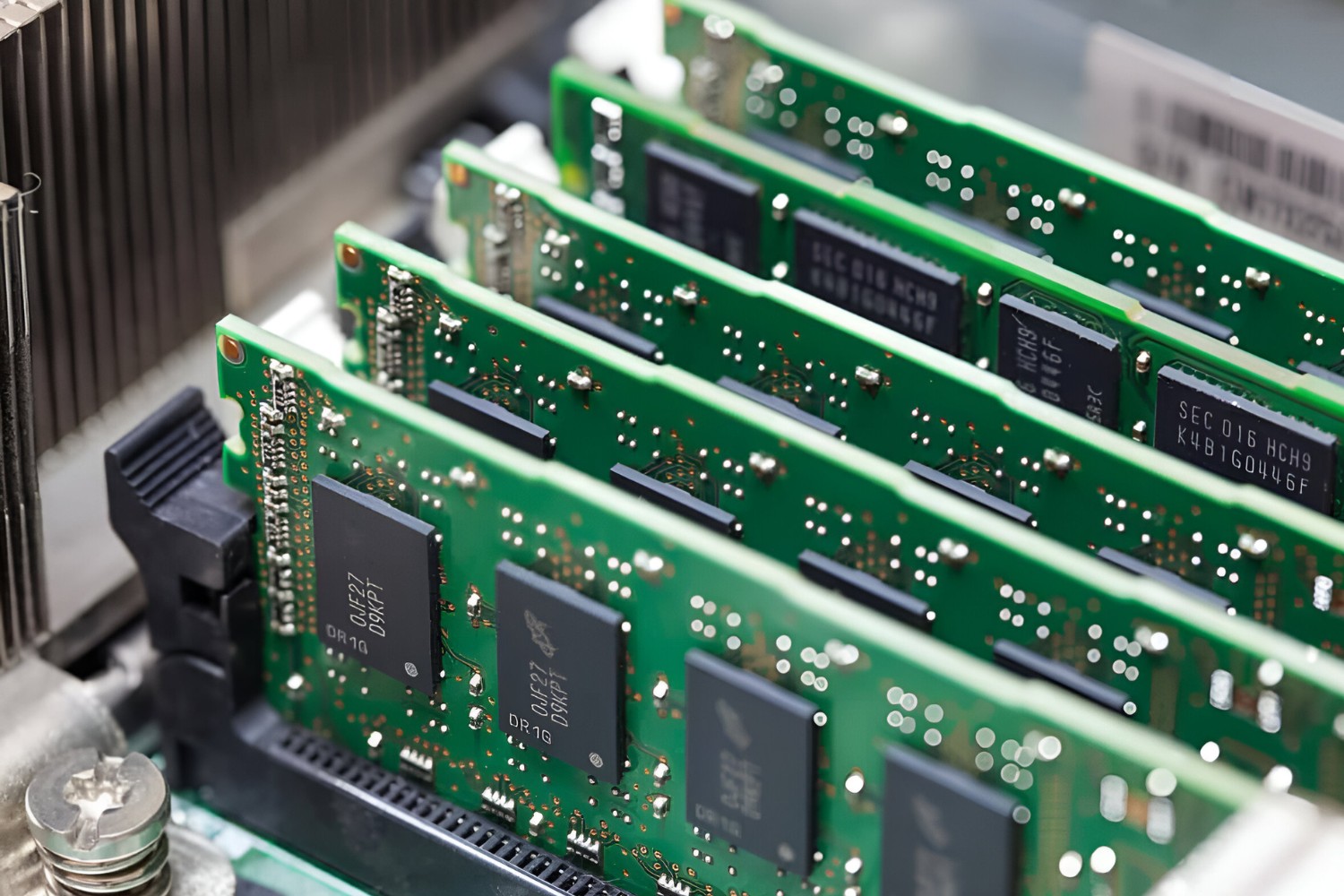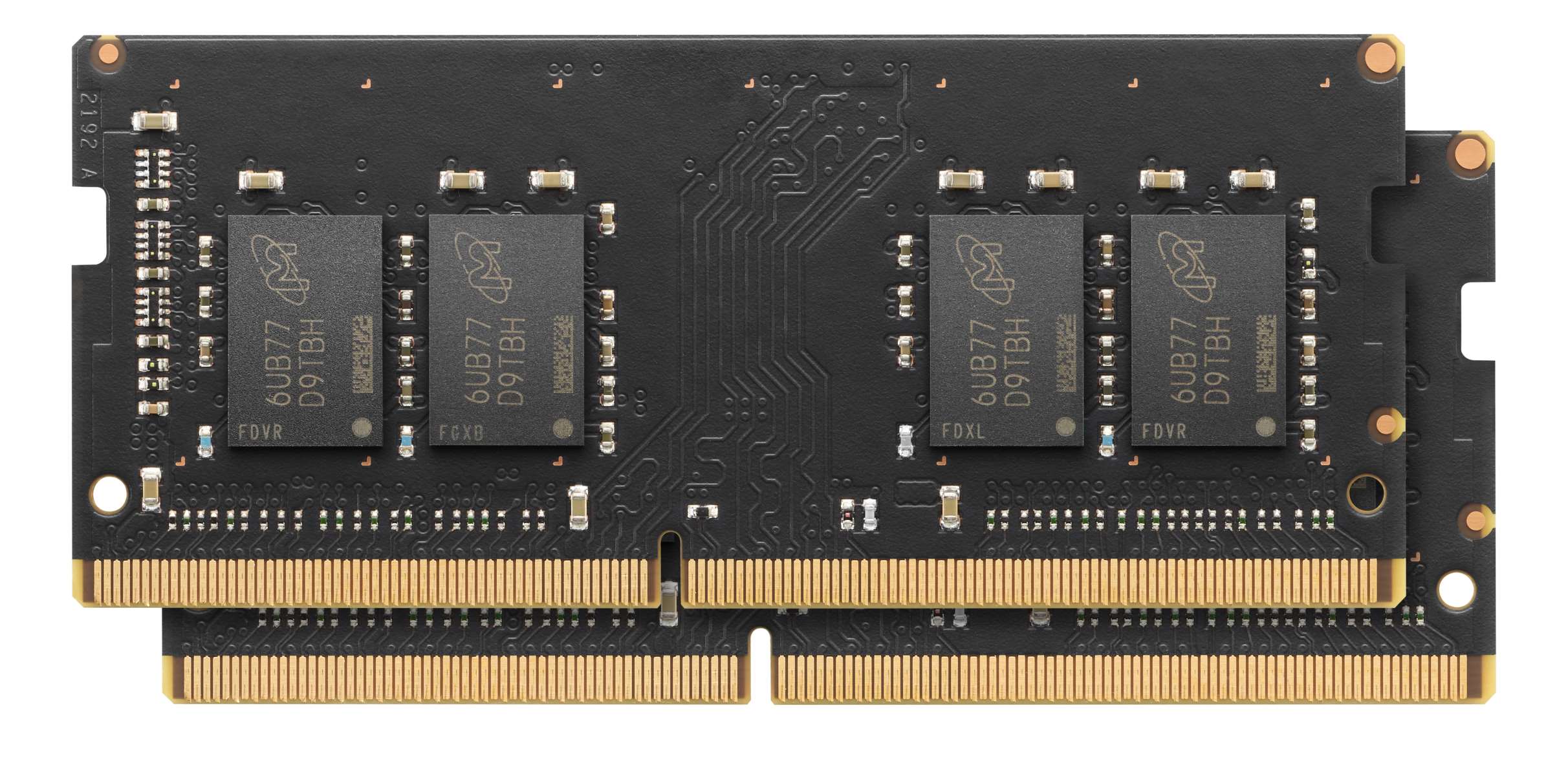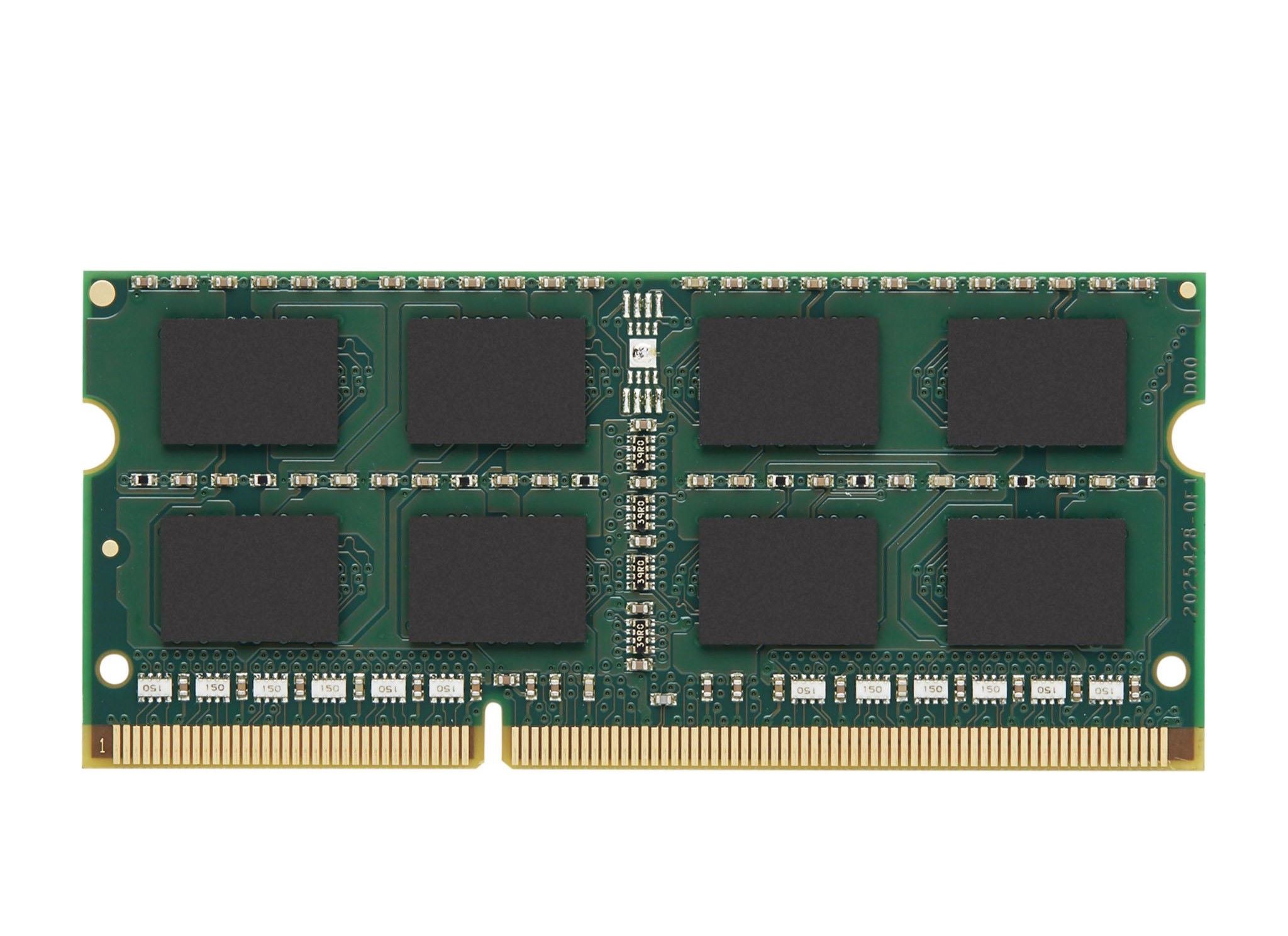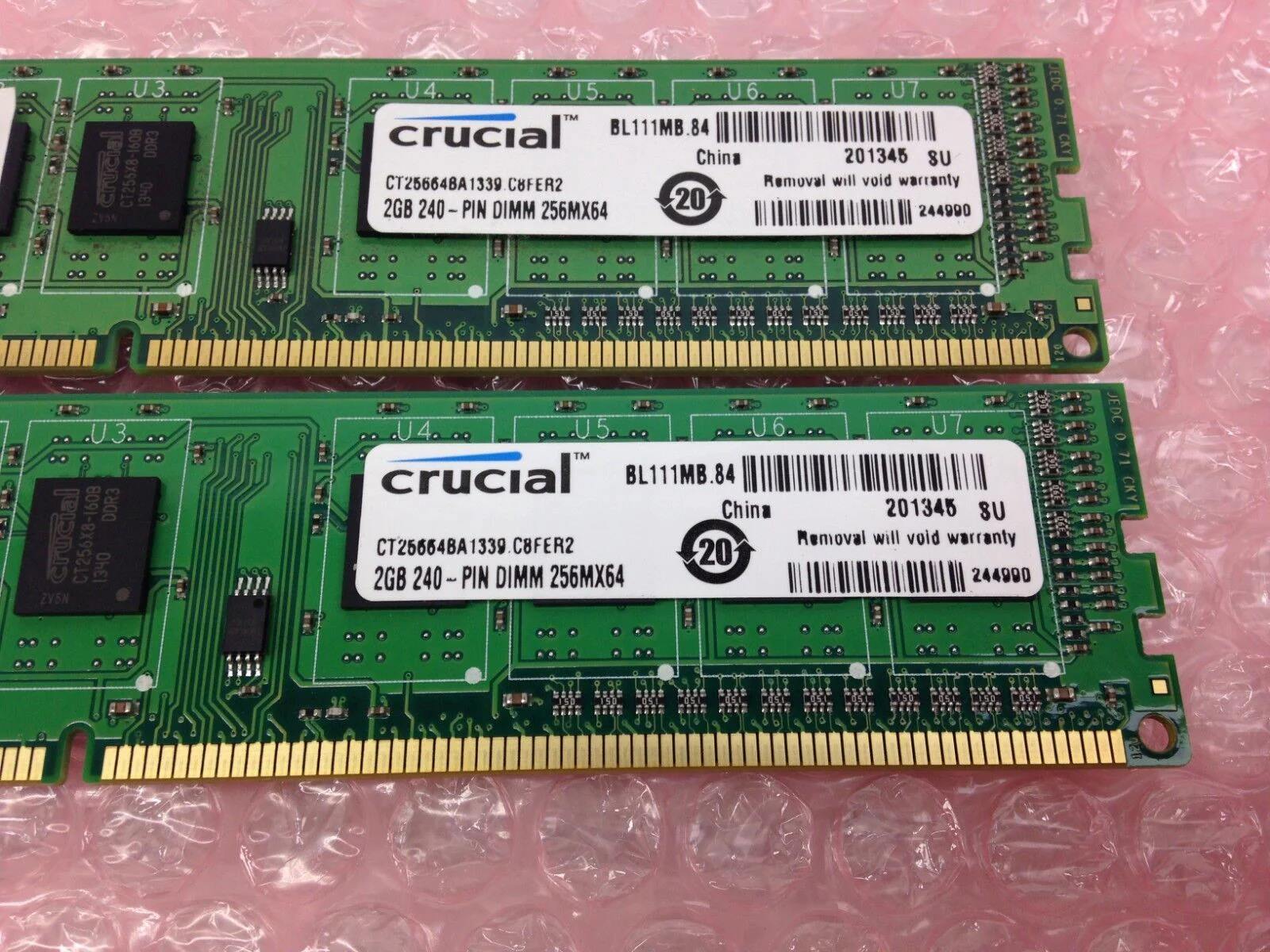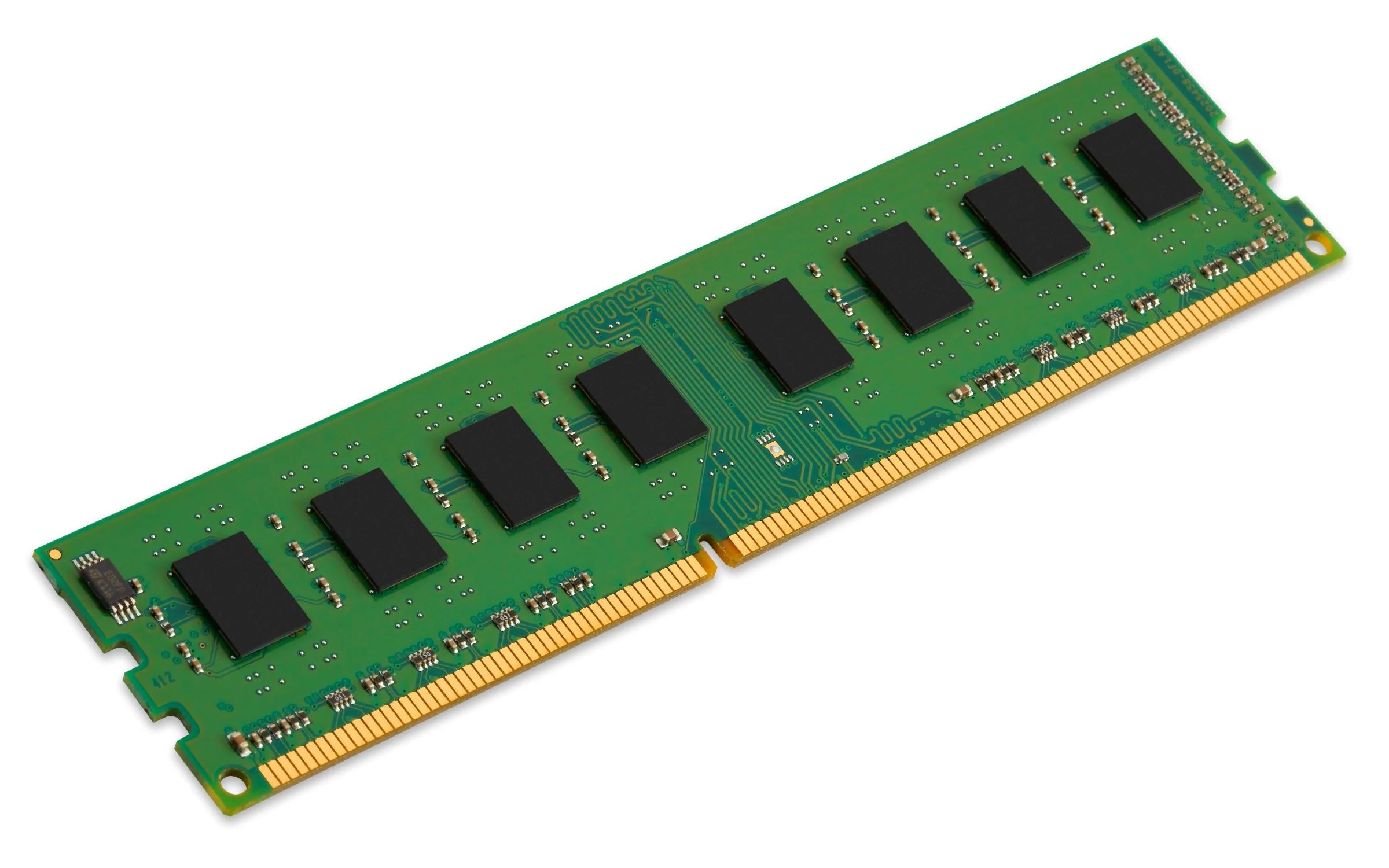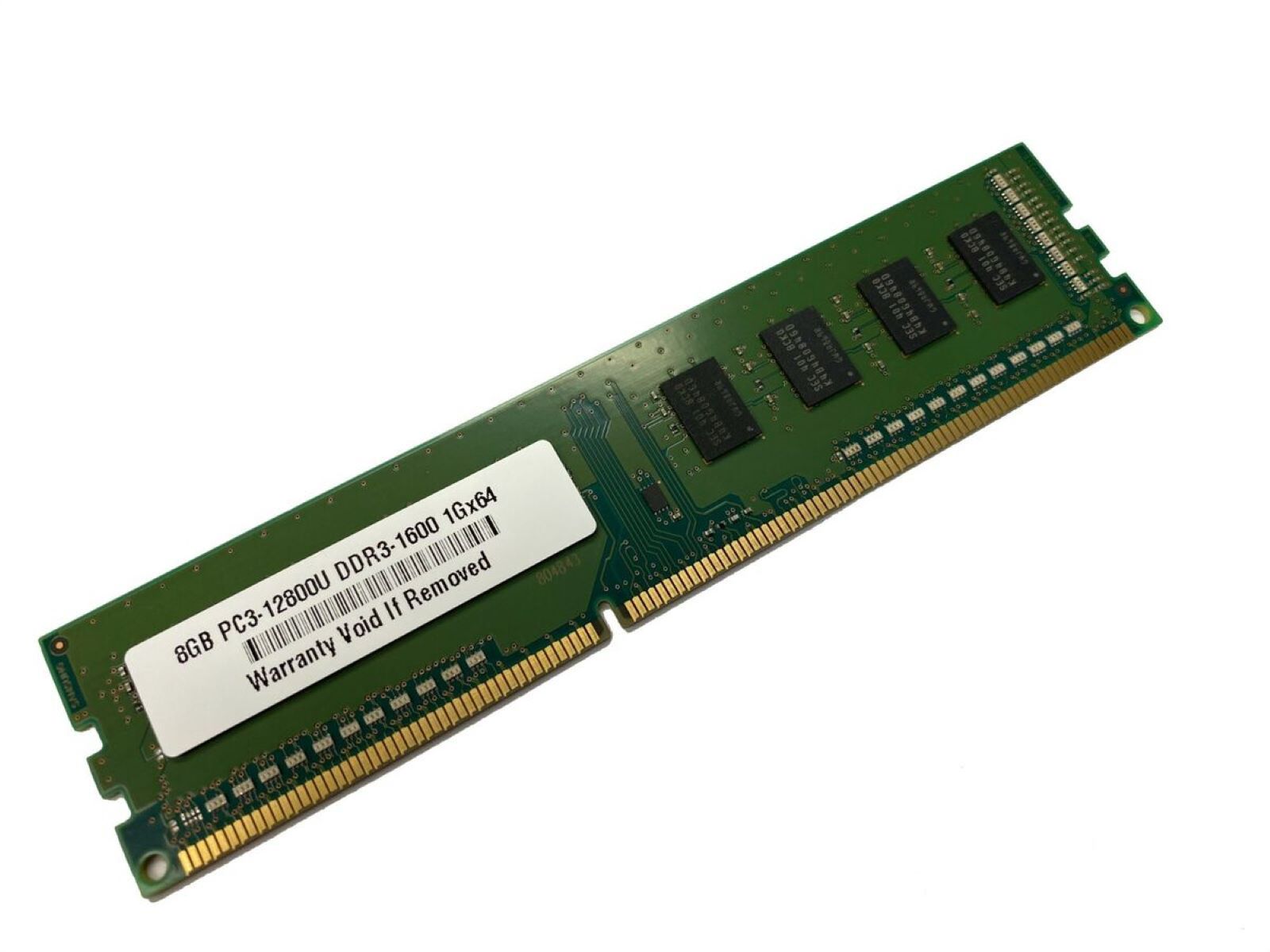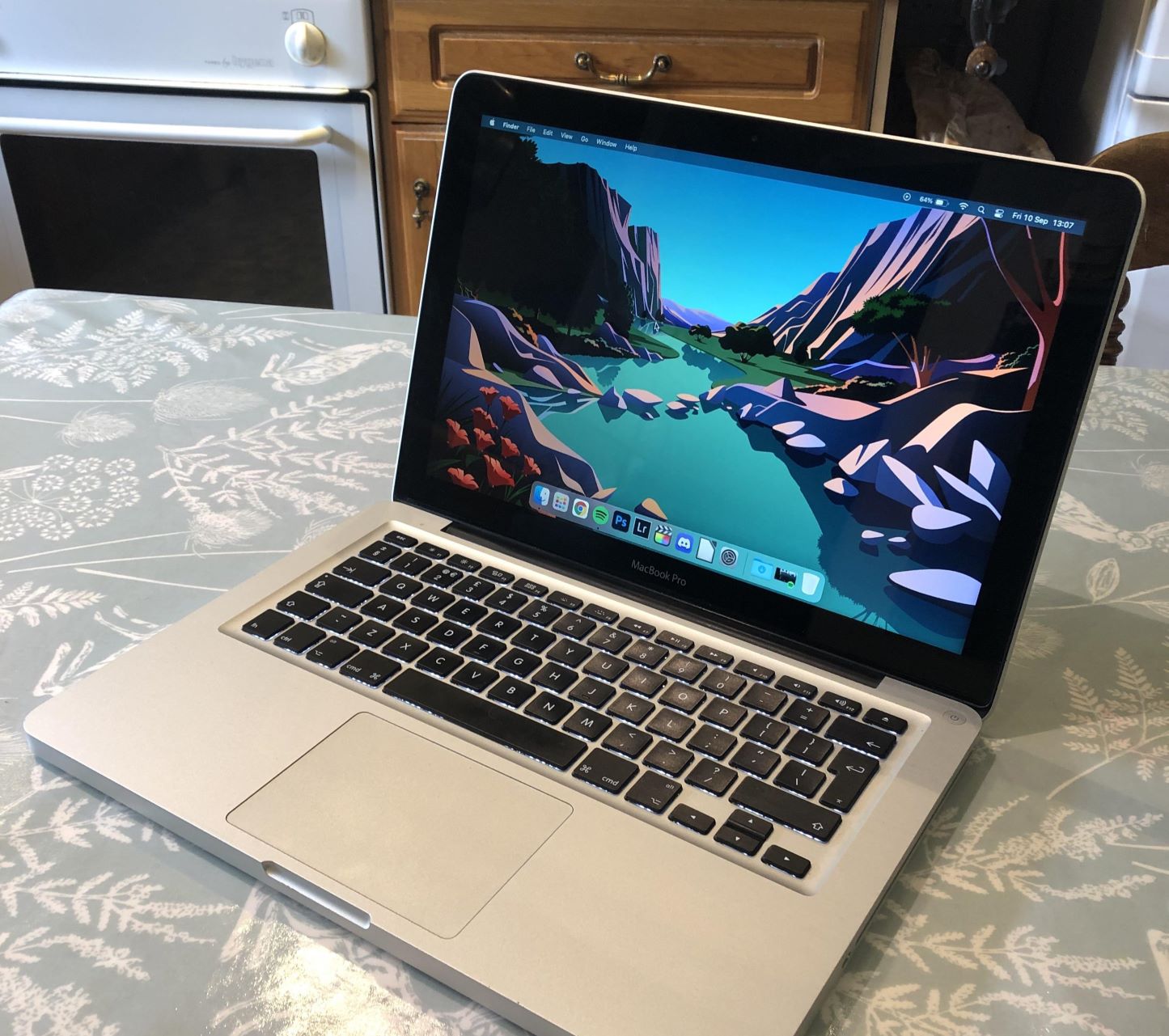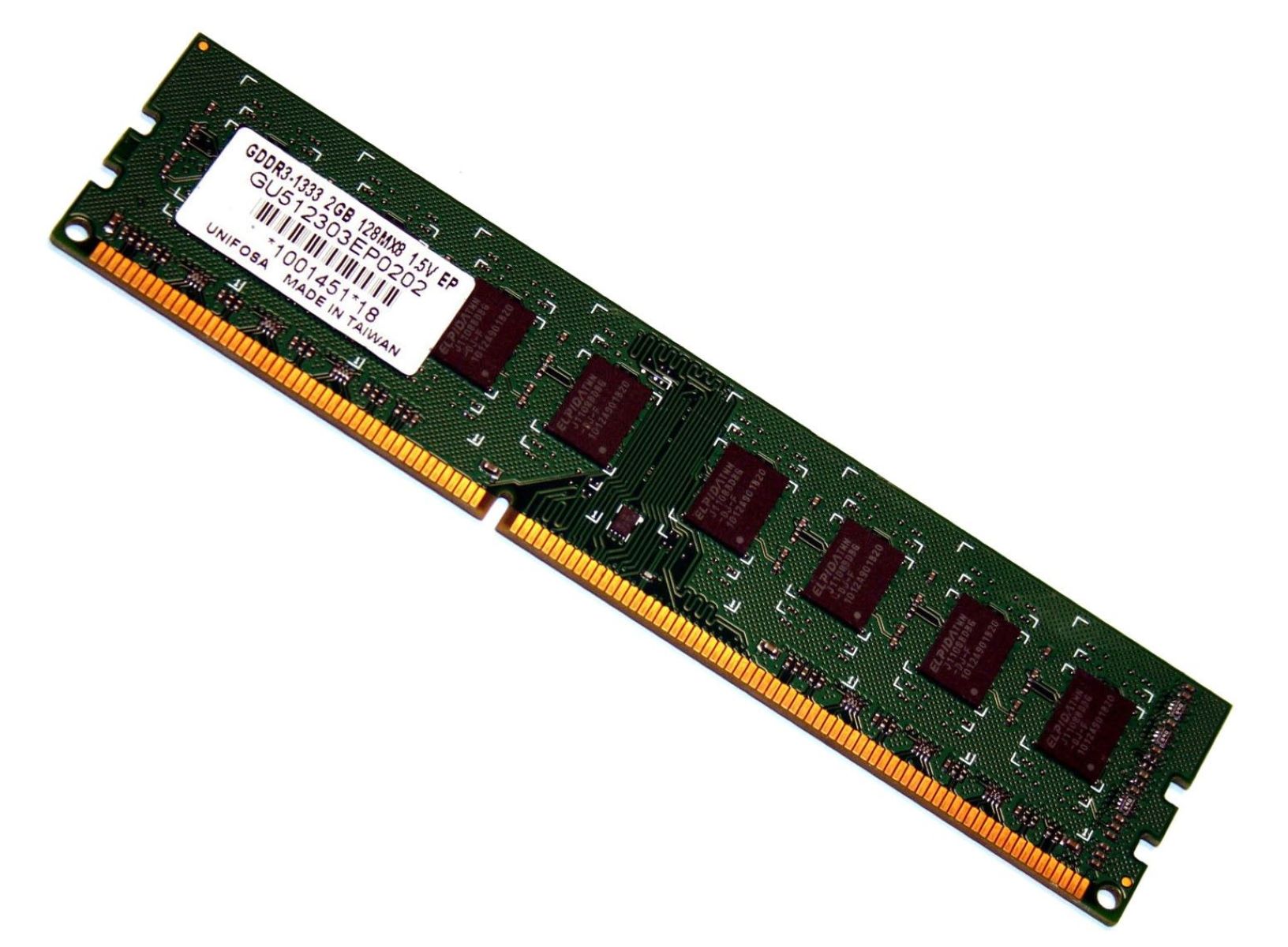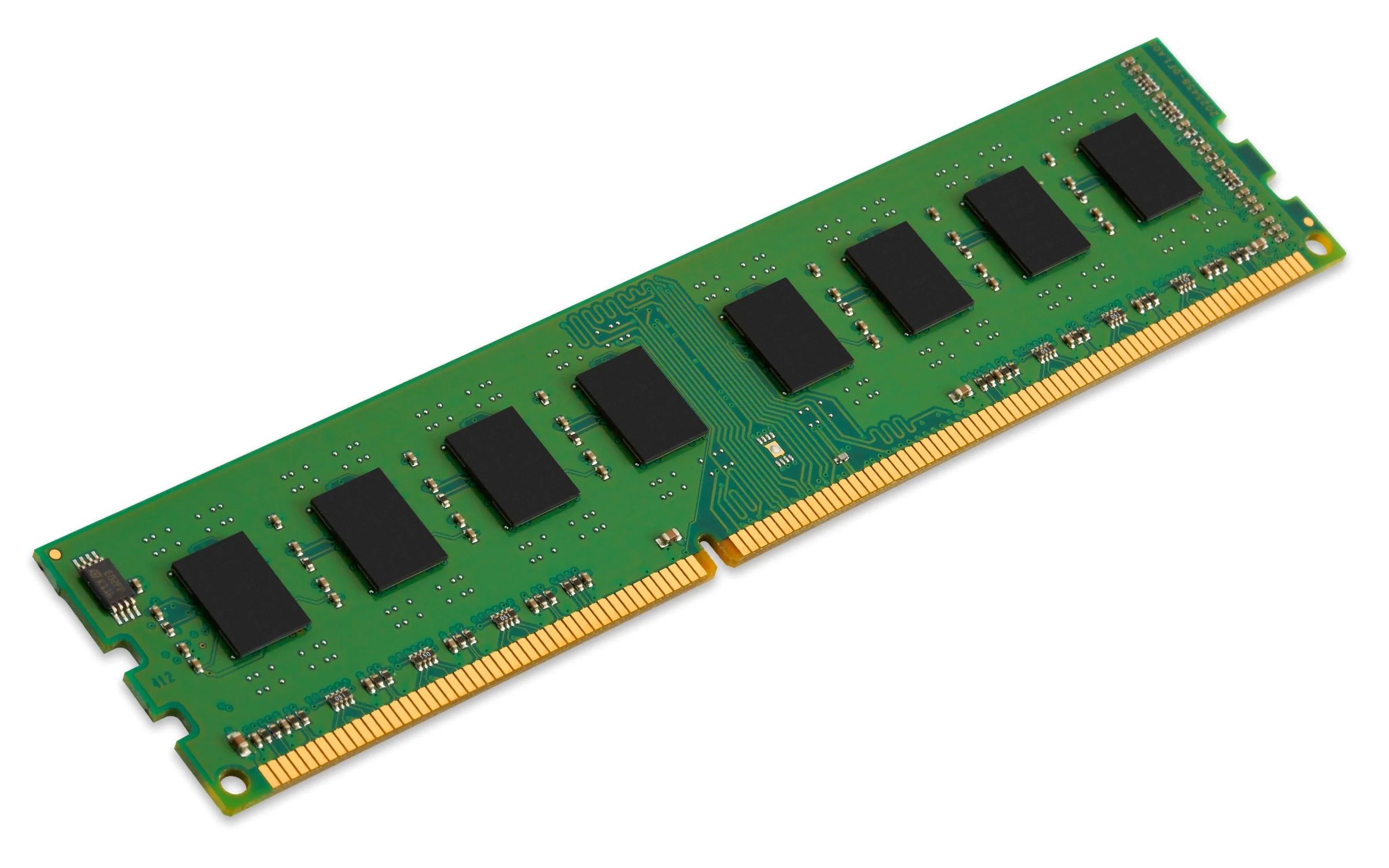Introduction
When it comes to choosing the right amount of RAM for your computer, it’s essential to understand the differences between various sizes. Two of the most common options are 8GB and 16GB RAM. RAM, or Random Access Memory, is a vital component in a computer system that helps store and access data quickly. It plays a crucial role in determining the overall performance and speed of your computer.
In this article, we will explore the differences between 8GB and 16GB RAM, and how they can impact your computer’s functionality. Whether you are a casual user, a gamer, or a professional who relies on resource-intensive applications, understanding the benefits and limitations of different RAM sizes will enable you to make an informed decision that suits your specific needs.
We will delve into various factors that can affect the performance of your computer with different RAM sizes, such as multitasking capabilities, gaming performance, video editing and rendering, and running virtual machines. Additionally, we will examine how budget and price considerations play a role in selecting the right amount of RAM for your system.
By the end of this article, you’ll have a clear understanding of the differences between 8GB and 16GB RAM, and the impact they can have on your computer’s performance. Armed with this knowledge, you’ll be able to make an educated decision when upgrading or purchasing a new computer, ensuring that it meets your requirements and delivers the optimal performance you desire.
Definition of RAM
RAM, or Random Access Memory, is a crucial component of a computer system that plays a vital role in its overall performance. As the name suggests, RAM allows for random access to data stored in the computer’s memory. It serves as a temporary storage area for data that the computer needs to access quickly, enabling faster processing speeds.
RAM is different from your computer’s permanent storage devices, such as the hard drive or SSD. Unlike these storage devices, RAM is volatile, meaning that its contents are erased when the computer is powered off. This temporary nature is what makes RAM ideal for storing data that needs to be accessed frequently and quickly.
RAM works by providing the CPU (Central Processing Unit) with a fast and efficient way to store and retrieve data. When you open an application or run a program, the necessary data is loaded from the storage device into RAM. This allows the CPU to quickly access and process the data, resulting in smoother and faster performance.
The size of the RAM determines how much data can be stored and accessed simultaneously. The more RAM your computer has, the more data it can hold in its temporary storage, reducing the need to rely on slower storage devices. This increased capacity can greatly improve multitasking capabilities, as the computer can keep more programs and data readily available for quick access.
It’s important to note that RAM is not the same as storage capacity. While storage devices provide a space to store files for long-term use, RAM offers temporary storage for data that is actively being used by the computer at any given time. The speed and efficiency of RAM directly impact the overall responsiveness and performance of the computer.
To summarize, RAM is a critical component in a computer system that provides fast and temporary storage for data that the CPU needs to access quickly. Its size determines the amount of data that can be stored and accessed simultaneously, directly impacting the computer’s multitasking capabilities and overall performance.
What does RAM do?
RAM, or Random Access Memory, is a fundamental component of a computer system that serves as a temporary storage space. It plays a crucial role in facilitating the quick and efficient functioning of a computer by providing access to data that the CPU (Central Processing Unit) needs to perform tasks.
When you open a program or run an application on your computer, it needs to load the necessary data into RAM for the CPU to access it easily. RAM acts as a bridge between the storage devices, such as the hard drive or SSD, and the CPU. By storing frequently accessed data in RAM, the CPU can rapidly retrieve and process the information, resulting in faster and smoother performance.
RAM also plays a significant role in multitasking. When you have several programs or applications running simultaneously, each one requires a portion of RAM to store its data temporarily. The more RAM you have, the more programs can be kept open simultaneously without experiencing a slowdown in performance. With sufficient RAM, you can seamlessly switch between tasks, run resource-intensive applications, and have multiple browser tabs open without any noticeable lag.
Another crucial function of RAM is improving gaming performance. Modern games are becoming increasingly graphically demanding and resource-intensive. Having an adequate amount of RAM allows the game to load and store assets, textures, and other essential data, providing a smoother and more immersive gaming experience. Insufficient RAM can lead to choppy frame rates, long loading times, and even crashes during gameplay.
RAM is also essential for tasks like video editing and rendering. Video editing software often requires a significant amount of RAM to process and manipulate large video files efficiently. With ample RAM, you can smoothly edit videos, apply effects, and render the final output without experiencing frustrating delays or system slowdowns.
Moreover, running virtual machines requires a substantial amount of RAM. Virtual machines allow you to emulate an entire computer system within your existing system, enabling you to run multiple operating systems or test software in a controlled environment. Having sufficient RAM ensures that each virtual machine has enough resources to operate smoothly without impacting the performance of your host system.
In summary, RAM plays a vital role in a computer system by acting as temporary storage for data that the CPU needs to access quickly. It facilitates multitasking, improves gaming performance, enhances video editing capabilities, and enables running virtual machines smoothly. Having an adequate amount of RAM is essential to ensure optimal performance and responsiveness from your computer.
Understanding RAM sizes
RAM, or Random Access Memory, comes in various sizes, typically measured in gigabytes (GB). The size of RAM determines how much data can be stored and accessed simultaneously, impacting the overall performance and capabilities of your computer.
Common RAM sizes include 4GB, 8GB, 16GB, and even higher capacities such as 32GB or 64GB. The right RAM size for your computer depends on your specific needs and usage requirements.
For basic tasks like web browsing, email, and word processing, 4GB of RAM is usually sufficient. It allows you to run these applications smoothly without experiencing significant performance issues. However, as software and operating systems become more resource-intensive, 4GB of RAM may start to feel limiting.
8GB of RAM is considered the sweet spot for most users. It provides ample memory for multitasking, allowing you to have several applications and browser tabs open simultaneously without experiencing significant slowdowns. It is suitable for casual users, students, and professionals who engage in everyday tasks such as web surfing, document editing, and light photo editing.
For power users, gamers, and professionals working with resource-intensive applications, 16GB of RAM is recommended. This amount of RAM allows for smoother multitasking and better performance when running demanding software. It is ideal for tasks such as video editing, 3D rendering, graphic design, and running virtual machines.
Furthermore, there are higher RAM sizes available for those who require even more power and performance. 32GB or 64GB of RAM is typically reserved for professionals working with extremely large datasets, undertaking complex simulations, or running multiple virtual machines simultaneously.
It is important to note that the amount of RAM required can vary based on the specific software or application you use. Resource-intensive software like video editing programs, virtualization software, or high-end games often require more RAM for optimal performance.
When considering the size of RAM for your computer, it’s essential to strike a balance between your needs and budget. While more RAM generally leads to better performance, it comes at a higher cost. Assessing your specific requirements and weighing them against your budget will help you determine the right RAM size that suits your needs.
To summarize, RAM comes in various sizes, with 4GB, 8GB, and 16GB being the most common options. The size of RAM impacts the performance and capabilities of your computer, and choosing the right size depends on your specific needs and usage requirements. Assessing the tasks you perform and considering your budget will help you determine the ideal RAM size for your computer.
Difference in performance between 8GB and 16GB RAM
One of the key considerations when choosing the amount of RAM for your computer is the difference in performance between 8GB and 16GB. While both sizes offer a significant improvement over lower capacities, there are notable distinctions that can impact your computer’s overall functionality.
One area where the difference between 8GB and 16GB RAM becomes apparent is multitasking capabilities. With 8GB of RAM, you can run multiple applications simultaneously without experiencing major performance issues. However, if you frequently engage in resource-intensive multitasking or work with memory-heavy applications, you may benefit from the additional headroom offered by 16GB of RAM. The extra RAM allows for smoother and more efficient handling of multiple tasks, reducing the likelihood of slowdowns or lag.
Gaming performance is another aspect where the difference between 8GB and 16GB RAM can be significant. While most games can run adequately with 8GB of RAM, certain demanding titles or those with high-resolution graphics may benefit from the additional memory. With 16GB of RAM, you can experience smoother gameplay, faster loading times, and improved overall performance. It also provides room for background tasks, such as voice chat applications or system monitoring software, without impacting the game’s performance.
For tasks like video editing and rendering, the extra 8GB of RAM can make a noticeable difference. Video editing software often utilizes a significant amount of memory to process and manipulate large video files. With 16GB of RAM, you have more headroom to load and work with multiple high-resolution videos, apply complex effects and transitions, and render the final output more efficiently. This can result in faster video editing workflows and a smoother overall experience.
Running virtual machines is another area where the difference in performance between 8GB and 16GB RAM becomes apparent. Virtual machines require a significant amount of memory to mimic the functionality of an entire computer system within your existing system. With 16GB of RAM, you can allocate more memory to each virtual machine, ensuring smoother and more responsive performance. This is particularly important if you need to run multiple virtual machines concurrently or if the virtual machines are running resource-intensive applications themselves.
When considering the difference in performance between 8GB and 16GB RAM, it’s essential to weigh your specific needs and usage patterns. If you primarily engage in basic tasks and light applications, 8GB of RAM may suffice. However, if your workload includes demanding multitasking, gaming, video editing, or running virtual machines, the extra memory offered by 16GB of RAM can provide a significant boost in performance and productivity.
Ultimately, the decision between 8GB and 16GB of RAM should be based on your personal requirements and budget. Assessing the types of tasks you perform, the software you use, and your intended usage patterns will help you determine the ideal amount of RAM that will deliver the best performance for your needs.
Multitasking capabilities
One significant factor to consider when comparing the multitasking capabilities of 8GB and 16GB RAM is the ability to efficiently handle multiple applications and tasks simultaneously. Multitasking refers to the ability to run several programs or processes concurrently without experiencing significant performance degradation or lag.
With 8GB of RAM, you can generally handle everyday multitasking tasks with ease. You can comfortably have multiple web browser tabs open, run productivity applications such as word processors or spreadsheets, and have messaging or email clients running in the background. Similarly, you can switch between different programs without noticeable delays.
However, as software and applications become more resource-intensive, the multitasking capabilities of 8GB RAM may start to show limitations. For example, running multiple tabs with media-rich content, such as videos or graphics-heavy websites, may require additional memory. Similarly, complex applications like video editing software or 3D rendering programs can quickly consume a considerable amount of RAM.
On the other hand, with 16GB of RAM, you have an enhanced ability to handle demanding multitasking scenarios. The additional memory allows your computer to keep more programs and data readily available, reducing the need for constant swapping between RAM and storage devices. This means you can have numerous applications running simultaneously, smoothly switch between tasks, and quickly resume work without experiencing significant performance drops.
For power users, content creators, or professionals who rely on multitasking for their work, 16GB of RAM can provide a noticeable improvement in productivity. It allows for more seamless multitasking across multiple resource-intensive applications, making it easier to handle complex projects, run virtual machines, or work with large datasets. Additionally, it provides buffer room for tasks like background file transfers, system updates, or running intensive software in parallel.
Moreover, the multitasking capabilities of 16GB of RAM can significantly benefit gamers. Modern games often require a substantial amount of memory to load and store assets, textures, and other data. With 16GB of RAM, gamers can have the game running alongside other applications like voice chat tools, game streaming software, system monitoring utilities, and more without compromising performance. This enables a smoother gaming experience and minimizes interruptions during gameplay.
In summary, the difference in multitasking capabilities between 8GB and 16GB of RAM is noticeable, especially when dealing with resource-intensive applications or running multiple programs simultaneously. While 8GB RAM is generally suitable for everyday multitasking, 16GB RAM provides enhanced performance and efficiency, making it an ideal choice for power users, content creators, professionals, and gamers who engage in demanding multitasking scenarios.
Gaming performance
When it comes to gaming, the amount of RAM can have a significant impact on the overall performance and gaming experience. Both 8GB and 16GB RAM sizes can handle most games, but there are notable differences that can affect gameplay, load times, and system responsiveness.
With 8GB of RAM, you can run many modern games reasonably well. Most games today are optimized to run smoothly with 8GB of RAM, allowing for fluid gameplay and providing enough memory to store game data and assets. However, as games become more graphically demanding and complex, there may be instances where 8GB of RAM falls short.
One of the key advantages of having 16GB of RAM when it comes to gaming is the ability to handle games that have a higher demand for memory. Games with high-resolution textures, detailed environments, and complex physics calculations may benefit from the additional memory. The extra space allows for better caching of game data, resulting in smoother gameplay, reduced hitching, and improved performance when navigating through demanding game worlds.
Add to this the fact that video game mods and user-generated content are becoming increasingly popular, and having 16GB of RAM can be advantageous. Modded games often require more memory to load and handle additional assets, scripts, and modifications. With 16GB of RAM, you have the headroom to accommodate these additional resources without impacting performance or causing instability.
Furthermore, having 16GB of RAM can make a noticeable difference in load times. Games often load data into RAM for quick access during gameplay, and having more memory allows for faster data retrieval. This can result in reduced load times, faster level transitions, and a more seamless gaming experience overall.
Another aspect where the difference in RAM size can impact gaming is multitasking while gaming. With 16GB of RAM, you have more room to run additional applications in the background without affecting the game’s performance. This can be beneficial for tasks like live streaming your gameplay, running voice chat applications, or monitoring system performance, all while enjoying smooth gameplay.
It’s important to note that while the difference between 8GB and 16GB RAM can be significant, other factors such as CPU, GPU, and storage speed also play a role in gaming performance. However, having ample RAM ensures that your system has enough memory to handle the game’s requirements and any additional tasks or applications running concurrently.
In summary, while 8GB of RAM is generally sufficient for gaming, 16GB of RAM can provide notable improvements in performance and overall gaming experience. It allows for smoother gameplay, faster load times, better multitasking capabilities, and can accommodate resource-intensive games and user-generated content without sacrificing performance or stability.
Video editing and rendering
Video editing and rendering is a computationally intensive task that requires substantial computing power, including an ample amount of RAM. When it comes to video editing, both 8GB and 16GB RAM sizes can be used, but the difference in performance can be noticeable, especially when working with large video files or employing complex effects and transitions.
With 8GB of RAM, you can edit videos using basic editing software and perform simple edits without significant performance issues. It allows for smooth playback and basic editing functions. However, as the complexity and size of the video files increase, along with the intensity of the editing operations, the limitations of 8GB of RAM may become apparent.
When working with high-resolution videos or multiple video tracks, having 16GB of RAM can greatly improve the editing and rendering process. Larger memory capacity allows for faster loading and manipulation of large video files, smoother timeline performance, and the ability to handle multiple video and audio tracks more efficiently.
Furthermore, complex video effects, transitions, color grading, and rendering tasks benefit significantly from additional RAM. These operations often require the software to load and process large amounts of data simultaneously. With 16GB of RAM, you have more room for caching and processing the data, resulting in faster previews, smoother real-time playback, and quicker rendering times for the final output.
Another advantage of having 16GB of RAM is the ability to work with multiple video editing applications or other resource-intensive software simultaneously. This is particularly useful if you need to utilize plugins or third-party software alongside your video editing program. The extra memory can ensure smooth performance and efficient workflow even when running additional software in conjunction with your primary video editing application.
Moreover, rendering, which is the process of exporting your edited video into a playable format, can be expedited with 16GB of RAM. Rendering requires a significant amount of memory to process and compress data. With more available RAM, your computer can handle the rendering process more effectively, resulting in faster export times and improved productivity.
In summary, while basic video editing can be accomplished with 8GB of RAM, 16GB of RAM offers significant advantages for more demanding video editing and rendering tasks. It allows for smoother playback, faster loading and processing of large video files, and efficient handling of multiple tracks and complex effects. The extra memory provided by 16GB of RAM greatly enhances the overall video editing experience, improves productivity, and reduces rendering times.
Running virtual machines
Running virtual machines is a common practice in various fields, including software development, system testing, and IT administration. Virtual machines allow you to create and run multiple independent operating systems or environments within a single physical computer. When it comes to running virtual machines, the amount of RAM plays a vital role in the performance and efficiency of the virtualized systems.
With 8GB of RAM, you can run virtual machines, but the scope and size of the virtualized environments may be limited. Simple and lightweight operating systems or configurations can function well with 8GB of RAM dedicated to the virtual machine. However, as you increase the complexity of the virtualized environment or run multiple virtual machines simultaneously, the memory limitations of 8GB RAM may become apparent.
Having 16GB of RAM provides a notable advantage in running virtual machines. It allows for more memory to be allocated to each virtual machine, resulting in better performance and responsiveness. With a larger memory pool, the virtual machines can handle more tasks and run resource-intensive applications more effectively.
Running multiple virtual machines simultaneously is where the difference between 8GB and 16GB RAM becomes most noticeable. With 16GB of RAM, you have the ability to allocate more substantial portions of memory to each virtual machine without causing performance bottlenecks. This is particularly important when running multiple resource-intensive applications within each virtualized environment.
Additionally, with 16GB of RAM, you can run virtual machines with larger memory requirements. Operating systems that require more memory, such as Windows servers or Linux distributions with graphical environments, can be comfortably allocated more RAM, resulting in improved performance and smoother operation.
Moreover, running virtual machines with 16GB of RAM allows for enhanced multitasking within each virtual environment. Each virtual machine can efficiently handle multiple applications and tasks without experiencing significant performance degradation. This is essential if you rely on the virtual machine environment to run critical software or perform complex simulations.
Another advantage of 16GB of RAM in the context of virtual machines is the ability to allocate sufficient memory for hypervisors or virtualization platforms. These software platforms require a certain amount of dedicated memory to facilitate the efficient operation of virtual machines. Having 16GB of RAM ensures that you have enough headroom to accommodate both the hypervisor’s memory requirements and the allocated virtual machine memory.
In summary, while virtual machines can be run with 8GB of RAM, having 16GB of RAM provides significant benefits in terms of performance and capabilities. It allows for smoother operation, better multitasking, larger memory allocations for virtual machines, and the ability to run multiple virtual machines simultaneously. With 16GB of RAM, you can create and manage more complex virtualized environments, enabling more efficient and powerful utilization of virtual machines.
Price and budget considerations
When deciding between 8GB and 16GB RAM for your computer, price and budget considerations play a crucial role. The cost of RAM can vary significantly based on the size and brand, and it’s important to assess your budget and the value you will gain from investing in additional memory.
Generally, 8GB of RAM is more affordable compared to 16GB RAM. The price difference can be substantial, especially if you are purchasing from reputable brands or seeking high-performance RAM modules. For budget-conscious users or those with basic computing needs, 8GB of RAM may provide sufficient performance without breaking the bank.
However, as the cost of RAM has decreased over time, the price gap between 8GB and 16GB RAM has become narrower. It’s important to consider the benefits and potential future requirements when making your decision. If you anticipate an increased demand for memory-intensive tasks in the near future, investing in 16GB of RAM upfront may be a wiser choice. This can save you from the hassle and potential additional costs of upgrading in the future.
Moreover, the value of 16GB of RAM can outweigh the price difference in certain scenarios. Professionals who heavily rely on multitasking, such as content creators, video editors, or software developers, can greatly benefit from the increased memory capacity. The improved performance and efficiency they gain can translate into time savings and increased productivity, ultimately justifying the additional investment in 16GB of RAM.
With that said, it’s important to assess your specific needs and the tasks you regularly perform on your computer. If you primarily engage in basic computing tasks, such as web browsing, document editing, or streaming media, 8GB of RAM may provide sufficient performance without straining your budget. In such cases, the cost savings can be allocated towards other components or accessories that enhance your overall computing experience.
Additionally, it’s worth considering the upgradeability of your computer. If your system allows for easy RAM expansion in the future, starting with 8GB of RAM initially and upgrading later may be a viable option. This approach allows you to spread the cost over time and adjust your system’s memory configuration based on your evolving needs.
In summary, price and budget considerations are important factors to weigh when choosing between 8GB and 16GB RAM. While 8GB of RAM is generally more affordable, it’s crucial to evaluate your specific needs, future requirements, and the potential value gained from investing in additional memory. Assessing the long-term benefits and considering upgradeability options can help you make an informed decision that aligns with your budget and computing needs.
Conclusion
Choosing the right amount of RAM for your computer is crucial in ensuring optimal performance and responsiveness. When comparing 8GB and 16GB RAM, there are important differences that can impact various aspects of your computing experience.
While 8GB of RAM is generally adequate for basic tasks and light applications, 16GB of RAM offers significant benefits for more demanding usage scenarios. With 16GB of RAM, you have the headroom to handle resource-intensive tasks like multitasking with numerous applications, gaming with high-resolution graphics, video editing and rendering, and running multiple virtual machines simultaneously.
When it comes to multitasking, 16GB of RAM provides smoother performance and greater efficiency, reducing the likelihood of slowdowns or performance degradation when juggling multiple tasks. Gamers can enjoy improved gaming performance, faster load times, and the ability to run additional background applications without impacting gameplay.
In video editing and rendering, the extra 8GB of RAM in 16GB configurations significantly enhances the editing experience by facilitating smoother timeline performance, faster previews, and quicker rendering times for the final output. Similarly, running virtual machines benefits from the increased memory capacity, enabling more efficient operation, larger memory allocations, and improved multitasking within each virtual environment.
Price and budget considerations are important factors to take into account. While 8GB of RAM is more affordable, it’s crucial to assess your specific needs, future requirements, and potential value gained from investing in additional memory. For power users, content creators, and professionals who heavily rely on resource-intensive tasks, the benefits of 16GB of RAM can outweigh the price difference.
In short, the decision between 8GB and 16GB RAM should be based on balancing your specific needs, budget, and intended usage patterns. Understanding the differences in performance and capabilities between these two RAM sizes allows you to make an informed decision that ensures your computer meets your requirements and delivers the optimal performance you desire.







